Snake plants, also known as Sansevieria, are fantastic additions to any indoor garden. These hardy and low-maintenance plants not only bring a touch of greenery to your home but also offer several benefits for your well-being.
In this guide, we’ll explore the benefits of growing snake plants and discuss some of my favorite snake plant varieties.
Benefits of Growing a Snake Plant
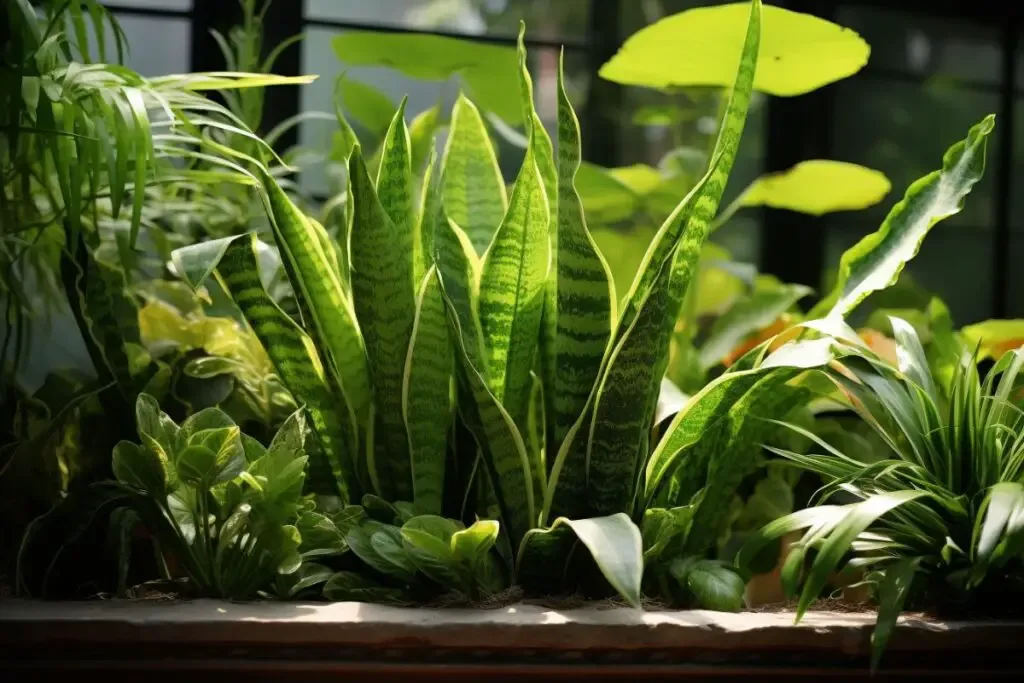
1. Air Purification
One of the most significant advantages of having snake plants in your home is their exceptional air-purifying qualities.
These plants are known for their ability to remove toxins such as formaldehyde and benzene from the air. If you’re concerned about indoor air quality, a snake plant can be a valuable addition to your living space.
2. Low Maintenance
For busy individuals or those who are new to gardening, snake plants are a dream come true. They thrive on neglect, making them the perfect choice for low-maintenance plant enthusiasts.
These plants can tolerate low light conditions, irregular watering, and benign neglect, making them an excellent option for those with a busy lifestyle.
3. Improved Sleep
Snake plants are unique in that they release oxygen at night, making them suitable bedroom companions. Increased oxygen levels can lead to better sleep quality and overall well-being.
Placing a snake plant in your bedroom not only adds a touch of natural beauty but also contributes to a more restful night’s sleep.
My Favorite Snake Plant Varieties
Now that we’ve explored the benefits of snake plants, let’s delve into some of my favorite snake plant varieties. These varieties come in different shapes, sizes, and patterns, allowing you to choose the perfect one to match your decor and personal preferences.
1. Sansevieria Trifasciata (Mother-in-Law’s Tongue)
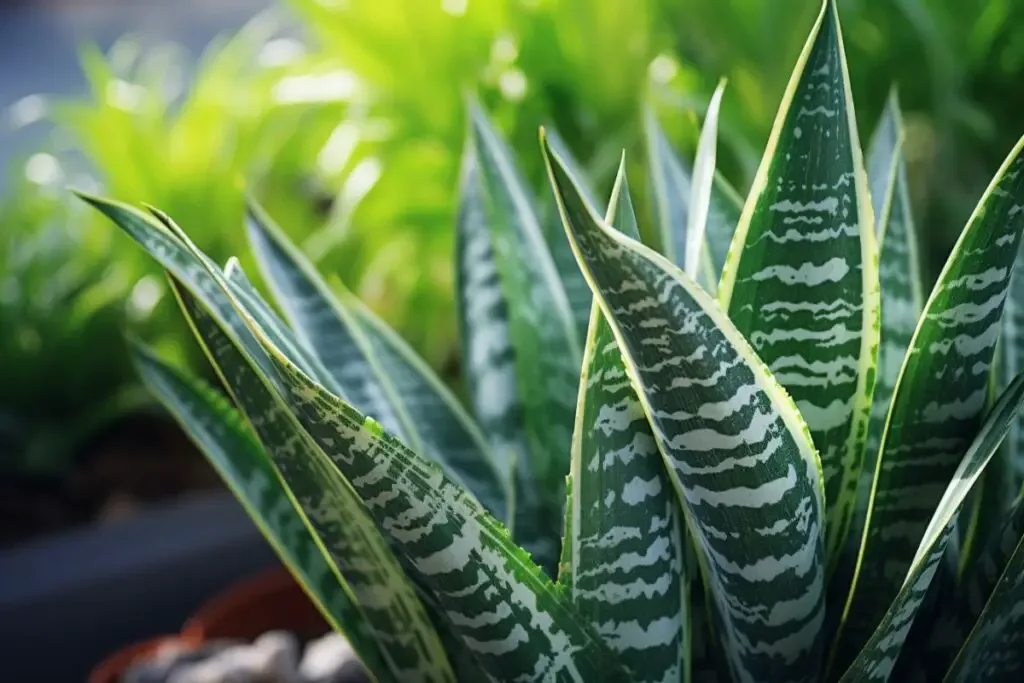
This classic snake plant variety features tall, upright leaves with dark green coloration and distinctive yellow margins. It’s an excellent choice for beginners and can thrive in a variety of lighting conditions. The Mother-in-Law’s Tongue is a timeless favorite that adds elegance to any room.
2. Sansevieria Cylindrica (African Spear)
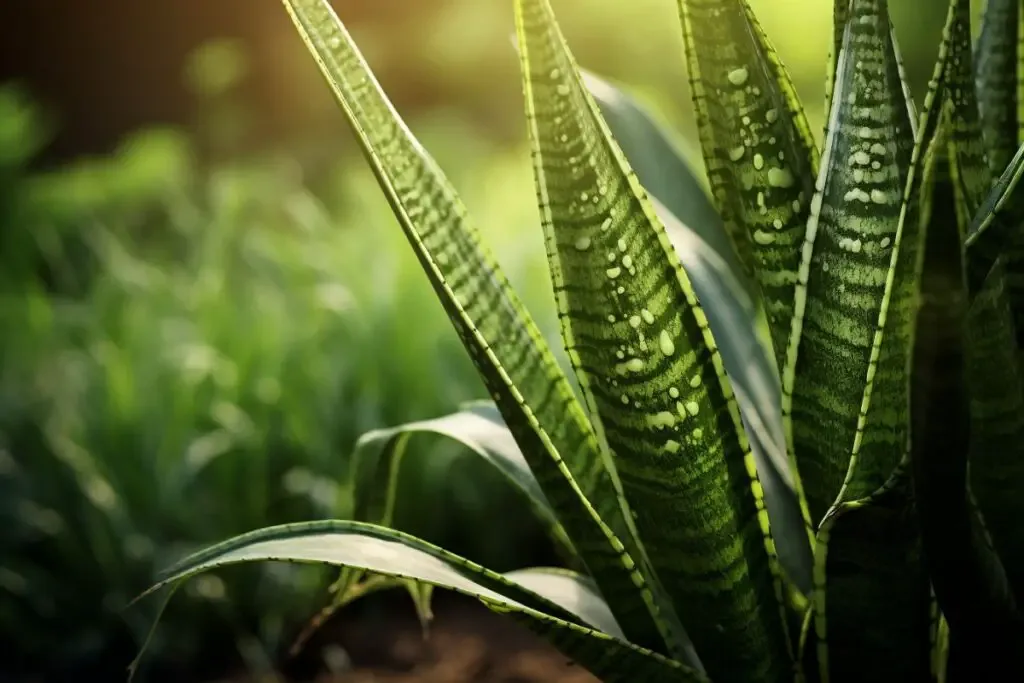
The African Spear snake plant is known for its cylindrical, upright leaves that give it a unique and striking appearance. These plants are excellent for modern and minimalist interior designs. They require minimal care and can tolerate bright indirect light.
3. Sansevieria Hahnii (Bird’s Nest Snake Plant)
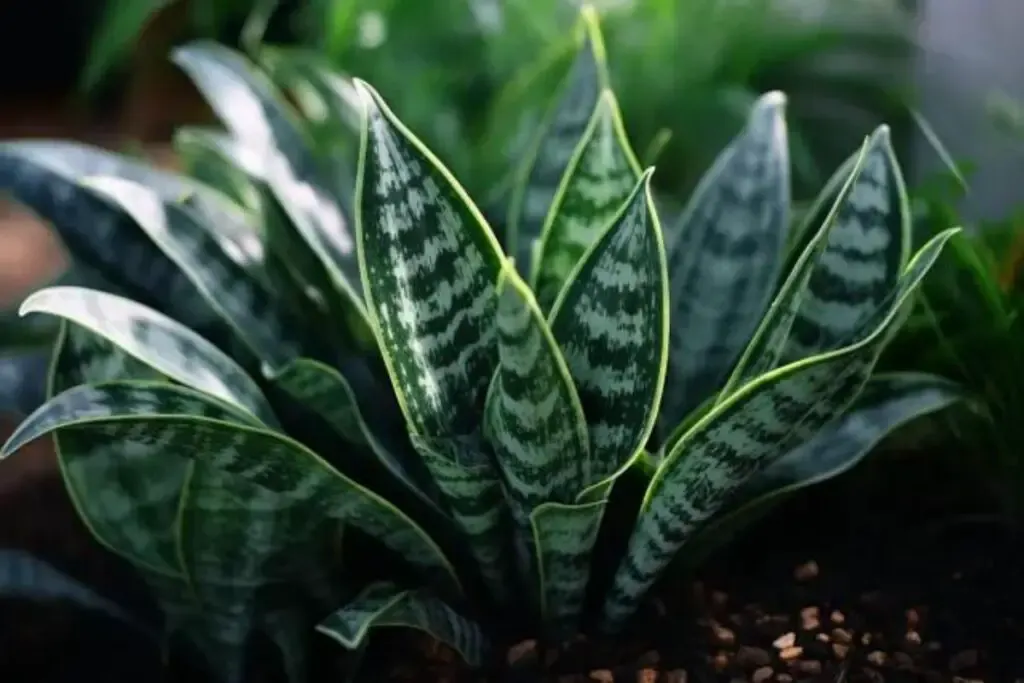
The Bird’s Nest snake plant is a compact variety with short, rosette-like leaves that resemble a bird’s nest. It’s a charming addition to small spaces and tabletops. This variety is incredibly low-maintenance and can thrive in low-light conditions, making it a versatile choice for any room.
Snake Plant Care
Now that you know about the benefits and some popular snake plant varieties, it’s time to dive into the nitty-gritty of snake plant care. These remarkable plants are known for their resilience, but proper care can help them thrive even more.
Here’s a detailed guide on how to care for your snake plant:
Planting
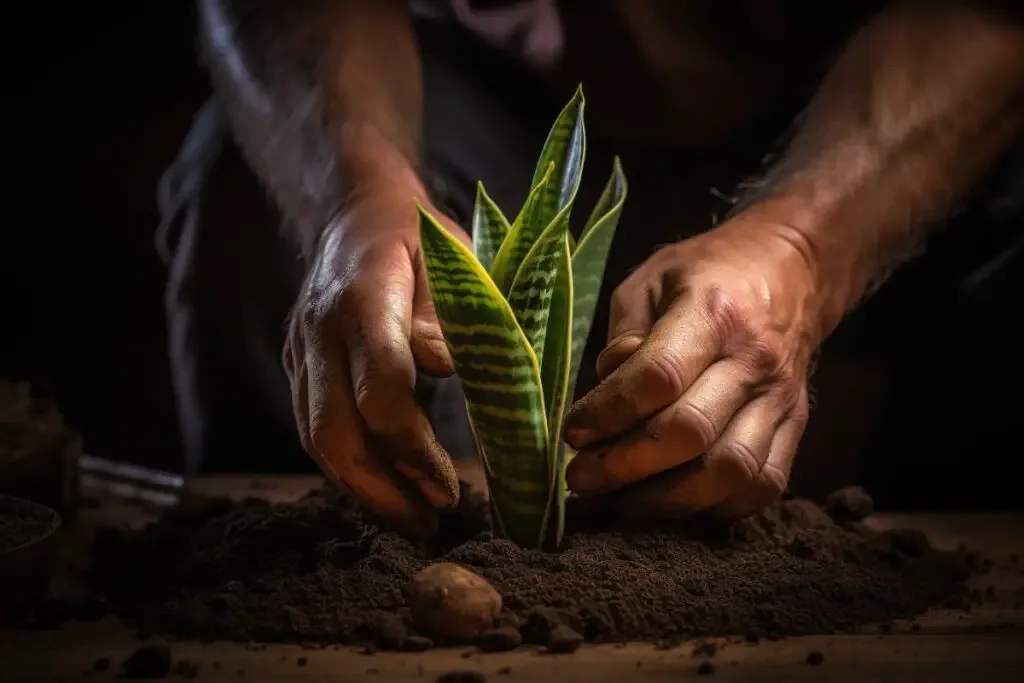
Snake plants are quite forgiving when it comes to their planting needs. However, a few key considerations can help ensure their optimal growth:
- Pot Selection: Choose a well-draining pot with a drainage hole to prevent water from accumulating at the bottom. A slightly larger pot than the current one will allow the plant to grow comfortably.
- Potting Mix: Use a well-draining potting mix, preferably one designed for succulents or cacti. You can also add some perlite or sand to improve drainage.
- Planting Depth: When repotting or planting a snake plant, make sure to keep the crown (the point where the leaves meet the roots) at or slightly above the soil surface.
Light
Proper lighting is crucial for the health of your snake plant:
- Indirect Light: Snake plants thrive in indirect sunlight, but they can tolerate low light conditions. Avoid placing them in direct sunlight for extended periods, as it can scorch their leaves.
- Low-Light Tolerance: These plants are excellent choices for rooms with minimal natural light, making them suitable for offices, bathrooms, or corners with lower light levels.
Soil
Choosing the right soil is essential for the well-being of your snake plant:
- Well-Draining Soil: Use a well-draining potting mix to prevent overwatering, which can lead to root rot. Mixing in perlite or coarse sand can further improve drainage.
Water
Watering your snake plant correctly is crucial to prevent root issues:
- Moderate Watering: Allow the top inch or so of the soil to dry out between waterings. Water sparingly, especially in the winter months when the plant is in its dormant phase.
- Avoid Overwatering: Snake plants are more tolerant of drought than overwatering. It’s better to underwater than to overwater these plants.
Temperature and Humidity
Maintaining the right temperature and humidity levels contributes to the health of your snake plant:
- Temperature: Snake plants prefer temperatures between 70-90°F (21-32°C). They can tolerate lower temperatures, but avoid exposing them to temperatures below 50°F (10°C).
- Humidity: Snake plants are adaptable and can thrive in a range of humidity levels. They do well in typical indoor humidity, but they can also tolerate lower humidity conditions.
Fertilizer
Fertilizing snake plants should be done sparingly:
- Frequency: Fertilize your snake plant sparingly, typically every 2-4 months during the growing season (spring and summer). You can use a balanced, diluted liquid fertilizer.
- Avoid Over-Fertilizing: Too much fertilizer can harm your snake plant. Always follow the recommended dosage on the fertilizer label.
Pruning
Pruning snake plants is a straightforward task that can help maintain their shape and appearance. Here are some tips on pruning your snake plant:
- Remove Dead or Yellow Leaves: Regularly inspect your plant for dead or yellowing leaves. Use clean, sharp scissors or pruning shears to trim them at the base to keep the plant looking healthy.
- Cut Back Overgrown Plants: If your snake plant becomes too tall or leggy, you can cut back the top portion of the leaves. This encourages new growth and helps maintain a more compact shape.
- Remove Offset Plants: Snake plants produce offsets or “pups” that can be separated from the main plant and potted individually. This not only helps control the size of the mother plant but also allows you to propagate more snake plants.
Propagating
Propagating snake plants is an exciting way to expand your indoor garden. Here’s how to do it:
- Offsets: As mentioned earlier, snake plants produce offsets. You can carefully remove these pups from the parent plant and plant them in separate pots. Make sure each offset has some roots attached for the best chances of success.
- Leaf Cuttings: You can also propagate snake plants from leaf cuttings. Cut a healthy leaf into several sections, each around 2-3 inches long. Allow the cuttings to air dry for a day or two, then plant them in a well-draining soil mix. Keep the soil lightly moist until they establish roots.
- Division: If your snake plant has become too crowded in its pot, consider dividing it during repotting. Gently remove the plant from its container and separate the root clumps. Replant each division in its pot.
How to Grow a Snake Plant from Seed
Growing snake plants from seeds is less common because they tend to produce offsets more readily. However, if you want to try it, follow these steps:
- Seed Collection: Collect mature seeds from a snake plant’s flower stalk if available. Let the seeds dry for a few days before planting.
- Planting: Sow the seeds in a well-draining potting mix, barely covering them with soil. Keep the soil consistently moist but not waterlogged.
- Germination: Snake plant seeds can take several weeks to months to germinate. Maintain a warm and consistent temperature to encourage germination.
- Transplanting: Once the seedlings have grown large enough, transplant them into individual pots or your desired growing location.
Growing in Pots
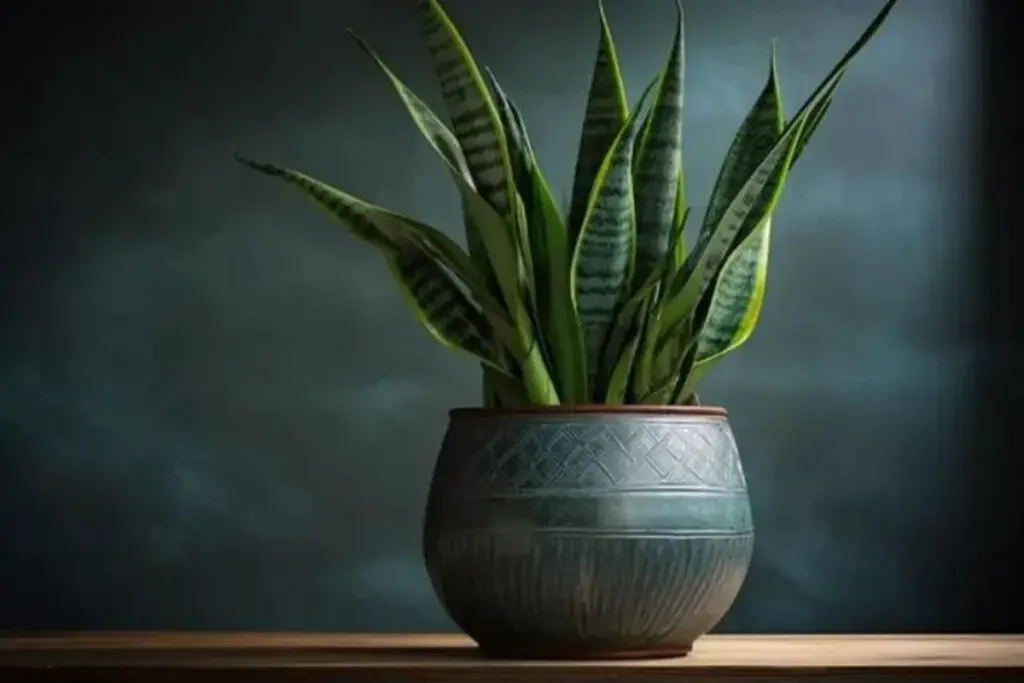
Growing snake plants in pots is a popular choice for indoor gardeners. Here’s how to do it successfully:
- Container Selection: Choose pots with drainage holes to prevent overwatering. Select a pot that allows for a bit of space for the plant to grow but is not excessively large.
- Potting Mix: Use a well-draining potting mix designed for succulents or cacti. Ensure the potting mix allows excess water to drain freely.
- Repotting: Snake plants generally don’t require frequent repotting. Repot when the plant becomes root-bound or outgrows its current container, usually every 2-3 years.
- Indoor Location: Place your potted snake plant in a location with indirect sunlight or low light conditions, depending on your plant’s variety and preference.
By following these guidelines for pruning, propagating, growing from seed, and growing in pots, you’ll have a thriving snake plant collection in no time. These versatile and hardy plants can adapt to various conditions, making them an excellent choice for both beginners and experienced gardeners.
Overwintering
Snake plants are relatively low-maintenance when it comes to winter care. Here’s what you need to know about overwintering your snake plant:
- Indoor Winter Care: In colder climates, it’s advisable to bring your snake plant indoors during the winter months. They are sensitive to frost and cold temperatures below 50°F (10°C).
- Reduced Watering: Snake plants enter a dormant phase during winter and require less water. Allow the top inch or so of soil to dry out between waterings. Be cautious not to overwater during this period.
- Low-Light Conditions: Snake plants can tolerate lower light conditions during the winter. Keep them in a well-lit room, but avoid direct sunlight, especially if your indoor space doesn’t receive much natural light.
Transplanting
Transplanting your snake plant is necessary when it outgrows its current pot or the soil becomes depleted. Here’s how to do it:
- Timing: The best time to transplant your snake plant is during its active growing season, which is typically in spring or early summer.
- Choose a Larger Pot: Select a new pot that is 1-2 inches larger in diameter than the current one. Make sure it has drainage holes.
- Repotting Procedure: Gently remove the snake plant from its current pot, being careful not to damage the roots. Shake off old soil and inspect the root system for any signs of disease or rot. Trim any damaged or rotting roots. Place the plant in the new pot and fill it with fresh, well-draining potting mix. Water lightly after repotting.
- Maintenance: After transplanting, water the plant sparingly for the first few weeks to allow it to adjust to its new environment. Resume normal watering and care once the plant has acclimated.
Common Pests & Diseases
Snake plants are generally resistant to most pests and diseases, but it’s essential to be vigilant. Here are some common issues to watch for:
- Root Rot: Overwatering and poor drainage can lead to root rot. Ensure your snake plant’s soil is well-draining and avoid leaving it in standing water.
- Mealybugs: Mealybugs are small, white, cottony insects that can infest snake plants. Remove them by gently wiping the affected areas with a cotton swab dipped in rubbing alcohol.
- Spider Mites: Spider mites are tiny pests that can create fine webs on your snake plant. Use a strong stream of water to wash them off or apply neem oil as a natural remedy.
- Fungal Issues: Excessive moisture can lead to fungal problems. Ensure the plant’s environment is well-ventilated and avoid splashing water on the leaves.
By following these guidelines for overwintering, transplanting, and addressing common pests and diseases, you can keep your snake plant healthy and thriving for years to come. Remember that snake plants are resilient, and with proper care, they can withstand many challenges.

